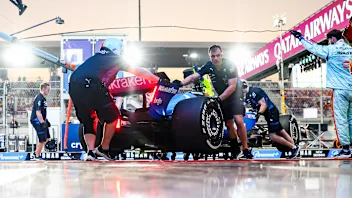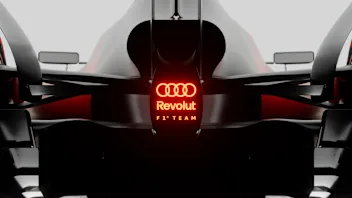EXCLUSIVE: The inside story on how the world’s fastest street track was designed for the Saudi Arabian GP
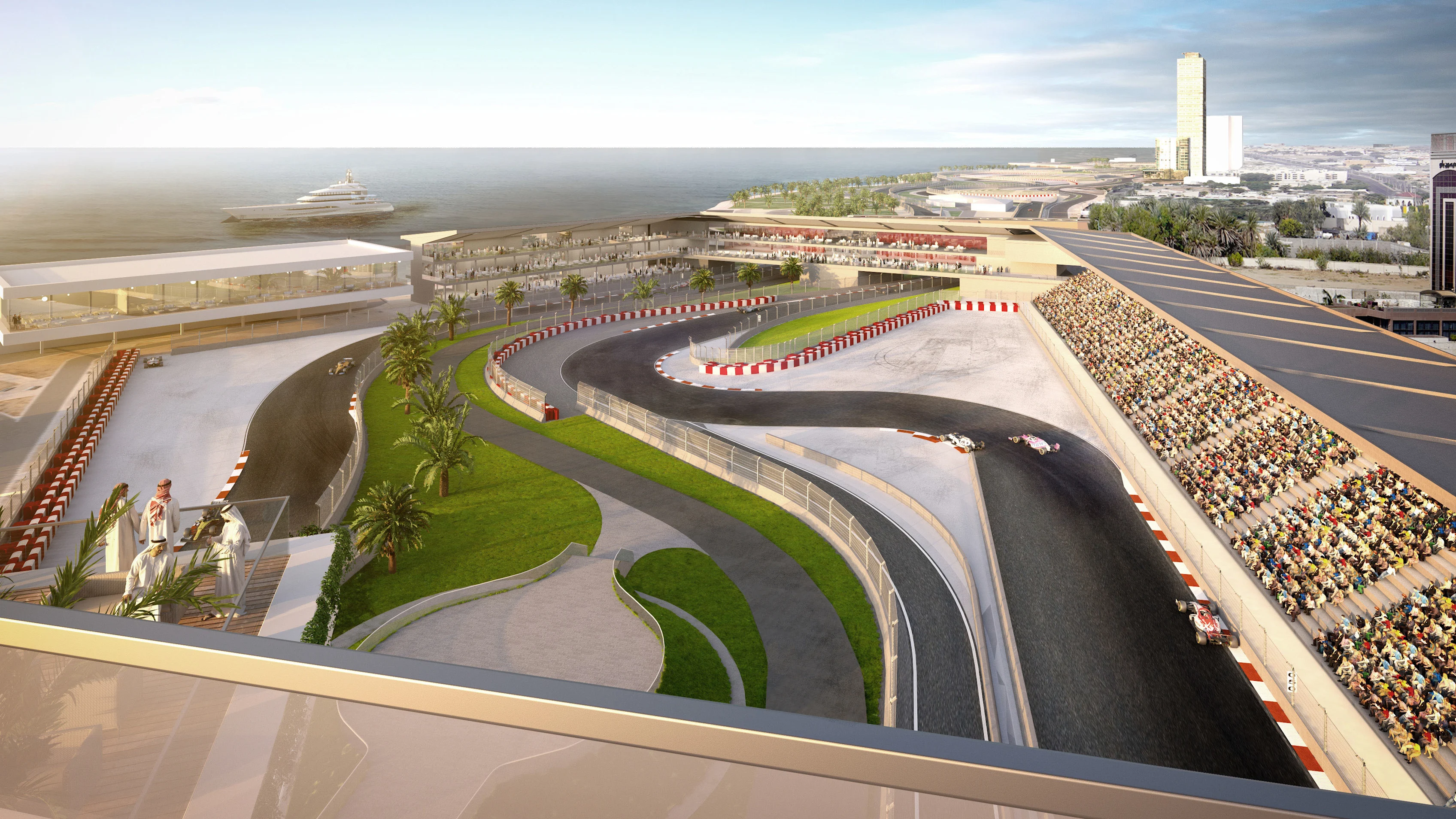
Formula 1 heads to Saudi Arabia for the first time in its history later this year, with the race to be held on what will be the world’s fastest street circuit. Here’s the tale of how the epic and sweeping 27-turn track came together…
Google Earth kicked off the track design process
When it became clear Saudi Arabia were keen on hosting a Grand Prix, Formula 1’s in-house Motorsports team were asked to investigate the feasibility of building a street track in Jeddah, the Kingdom’s second-biggest city by population.
The first port of call was Google Earth, to try and understand the areas around Jeddah that would be suitable. The team spent several days on the satellite imagery mapping tool before mocking up some initial concepts to create simulation models ahead of a site visit.
FIRST LOOK: Fastest ever F1 street circuit revealed for Saudi Arabian Grand Prix in Jeddah
Saudi hosted the first site visit in 2020
Formula 1 sent a delegation to Saudi Arabia in January 2020, to recce a number of potential sites, and a clear frontrunner emerged very quickly. “The site on the Corniche in Jeddah stood out,” says Ross Brawn, F1 Managing Director, Motorsport. “It’s on the coast, so we have great panorama but more importantly, we’ve been able to build a really exciting street circuit.”
The Corniche area on the Red Sea is located 12km north of Jeddah’s centre. It’s a narrow coastal strip of reclaimed land that is a mixture of asphalt car parks, open spaces and lagoons and will provide a stunning backdrop.
One of the area’s appealing aspects was the long, sweeping roads which the team felt could be mobilised to create a unique street circuit in the short timeframe, with a finished track required for a race in late 2021.
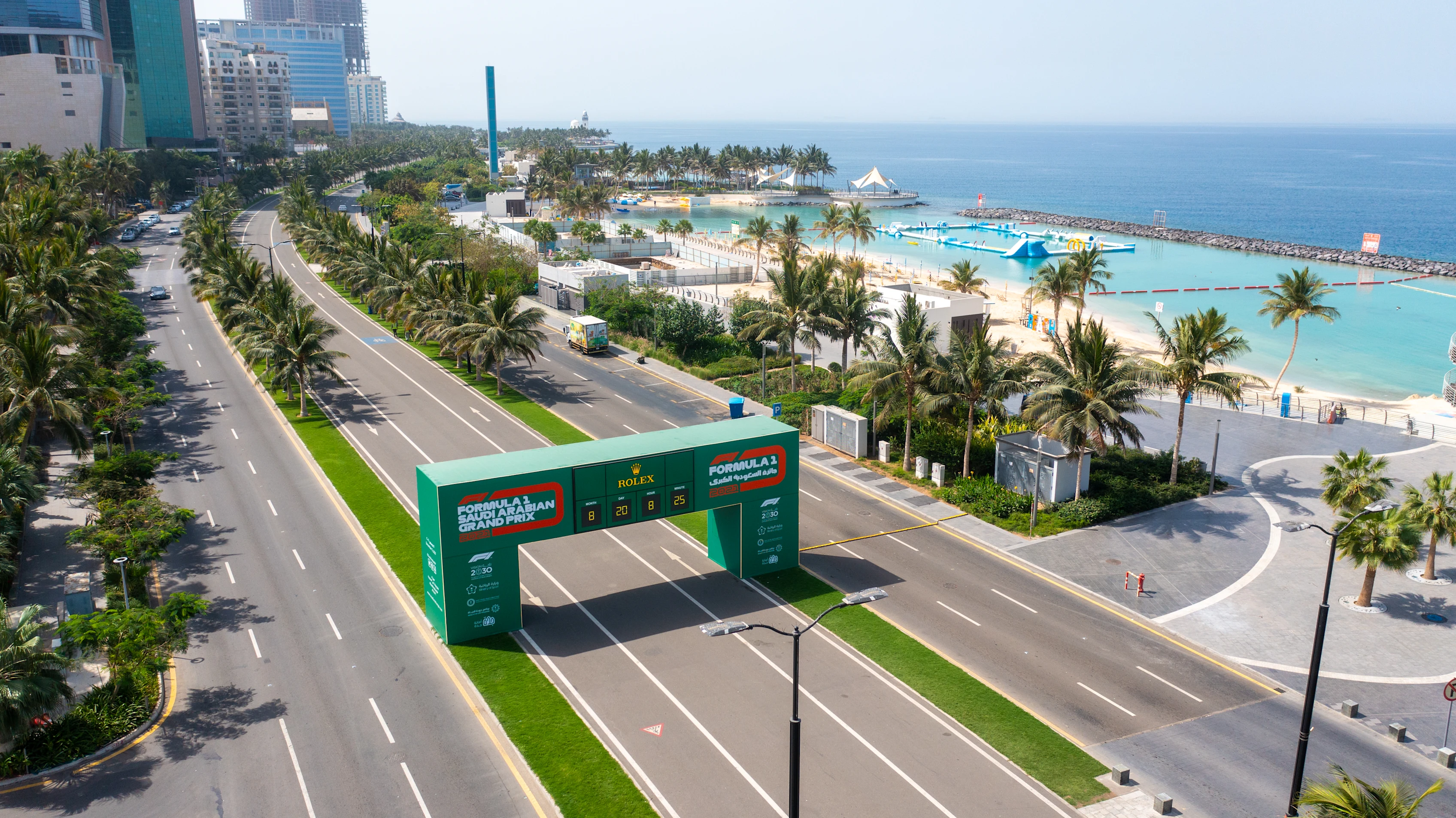
A super team formed to design the circuit
The promoter selected Tilke, renowned for having a hand in countless circuits on the F1 calendar, to design the track and together with F1’s Motorsport team, they married their own concepts into a finalised layout that both sides were happy with.
READ MORE: Everything you need to know about F1’s new race in Saudi Arabia
“We’ve been working very closely with Tilke,” said Brawn. “What we want to see is a race circuit. We don’t want Mickey Mouse circuits. We don’t want those old classic street circuits with 90 degree turns. We want fast sweeping circuits, circuits which are going to challenge the drivers - and they are going to love it - and we want circuits where we can have wheel to wheel racing.
“This is a circuit which is utilising some of the existing infrastructure, but we’ve been lucky in that there have been areas where we have been able to build from scratch, so we’ve been able to build some really exciting parts of the circuit.”
Craig Wilson, F1's Head of Vehicle Performance, added: “Once Tilke was chosen as the circuit and event designers, then we discussed their track proposals and event ideas relative to our concept and over a very short time came to a solution that married our concept with their proposals into the circuit layout seen, that we were both happy with.
"As the work progressed into detail design then there have been various tweaks for different reasons to achieve the circuit, which Tilke worked on with us assessing the accommodations so as to keep the characteristic of the circuit as envisioned unchanged.”
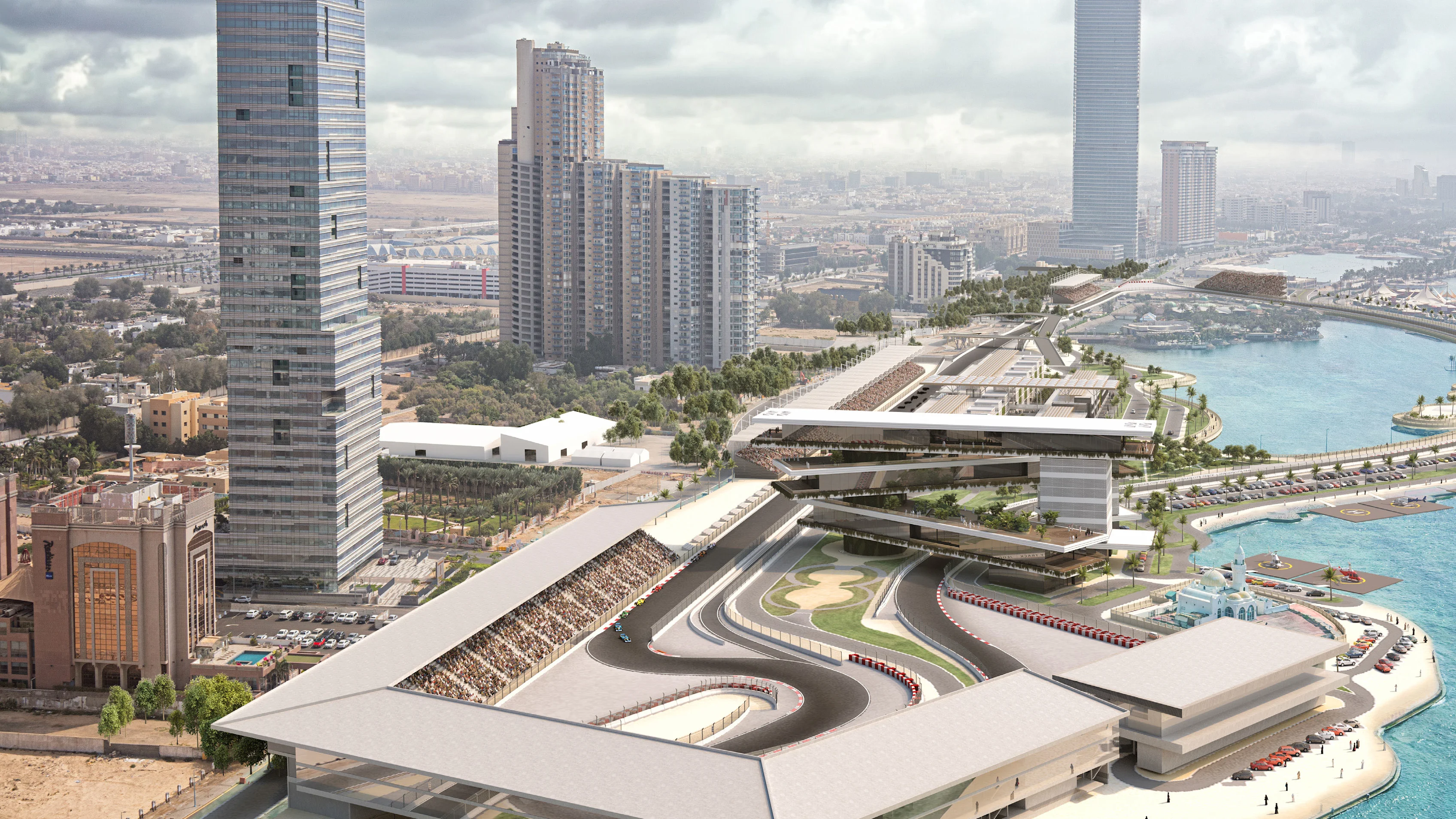
The big considerations in finalising the layout
While building a purpose-built circuit from scratch means a designer can start with a blank sheet of paper, a street circuit proposal is a completely different proposition as you’re required to work inside the general confines of the existing infrastructure.
“The biggest challenge was working out how to come up with a track concept within what is quite a narrow strip of land, that still had decent cornering sections with a wide range of corner speeds and not just be a layout of hairpins, tight corners and straights," said Wilson.
"It took a few different concept schemes to begin with but once we assessed the simulation results then it was possible to settle quickly on a concept that we believed would work.”
Simulation guides final design
Formula 1 track design has evolved immensely in the last five years, with F1’s motorsports team building an arsenal of simulation tools to generate hard data in which to develop circuit concepts.
The strategy has changed. It’s not simply about taking your favourite corners and throwing them into the mix but rather using simulation to see how corners work together to deliver a spectacle.
“We’ve built those tools to strengthen our understanding, our modelling and our simulation,” added Brawn. “This circuit is going to benefit from all this work. Yes, there may be some similarities with other circuits, but we’ve looked at it from the perspective of first principles.
“It’s not a case of this corner works at that track so maybe we should plug that in. What is critical is the combination of corners and the distance of straights between the corners and how you lead into the different parts of the track. So you can’t just copy and paste something form a different track and stick it in a different situation as it might not work.”
There will be a 180 degree corner with a moderate amount of banking, so it will be a high G-load and high stress for the drivers
Landing on the world’s fastest street circuit
There was a real desire to move away from a street circuit concept that involved 90 degree, slow-speed corners, with a stop-start nature, towards a fast, flowing layout. And that has been achieved, with an exhillerating 27-turn, high-speed 6.175km layout.
That makes the Jeddah Street Circuit the second longest on the 2021 calendar, 0.829km shorter than table-topper Spa. And if it’s the world’s fastest street circuit, just how quick are we talking? Well it’ll have a staggering average speed of 252.8 km/h, slower only than Monza based on this year’s schedule.
Watch the hot lap simulation above. The top speed and sweeping changes of direction take your breath away.
“There are some great sweeping corners,” says Brawn. “At one end, there will be a 180 degree corner with a moderate amount of banking, so it will be a high G-load and high stress for the drivers.”
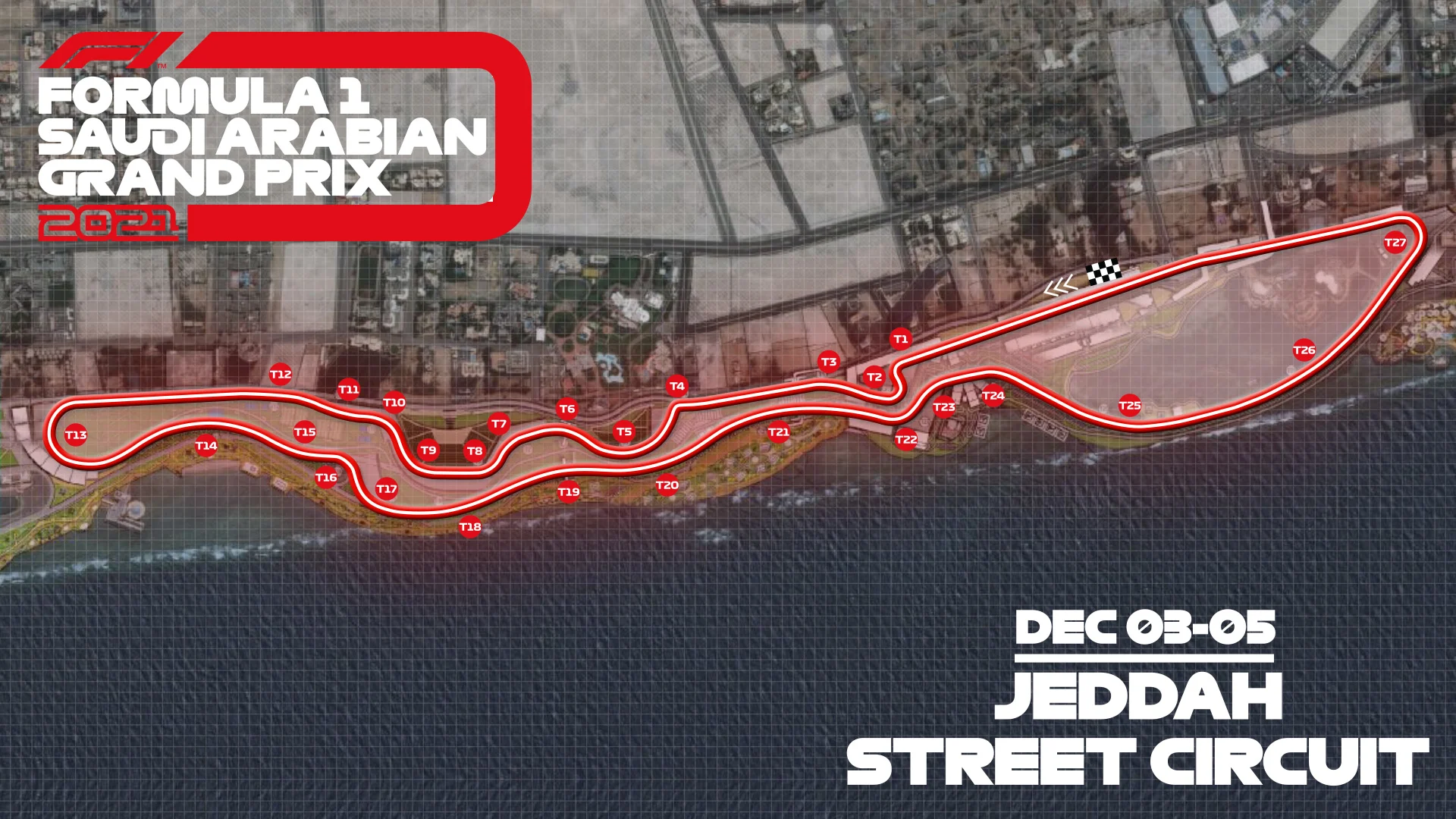
Opting for a night race
Formula 1 racing at night is spectacular, as Singapore, Bahrain and Abu Dhabi have demonstrated over the last decade, so it’s perhaps no surprise that following the success of trialling the concept in Formula E, Saudi Arabia have opted to do the same with their first Grand Prix.
“Night race adds a special touch,” said HRH Prince Khalid Bin Sultan Al Faisal, President of the Saudi Automobile & Motorsport Federation (SAMF). “We think it’s the best option for us. We are going to light the Red Sea and the lagoons around the track - and do some light shows. We had our first night race in FE and it was a success.
“In Saudi Arabia, we don’t have cooler weather so we can’t do a lot of things during day, so people in our region like to go out more at night. We want them to see the race and after that celebrate with good meals and concerts.”
READ MORE: 6 key facts about the ultra-fast Jeddah Street Circuit
This circuit has been designed to have quality of overtaking
The headline overtaking spots and where to watch
With all these simulation tools in place, the big question is whether or not the new layout will create great racing with enthralling overtaking. Brawn says this has been at the heart of the project, but with a focus on quality passing rather than easy DRS-inspired overtakes.
“You want great racing, you don’t just want to tick the box of there’s a long straight with a hairpin at the end and you turn the DRS on and you overtake,” said Brawn. “That’s an overtake, but it doesn’t turn us on does it?
“What you want is wheel to wheel action. You want the driver behind to get close enough that he can take the line in the corner. You want complexes of corners where one driver can get on the inside of another initially, force him out on the line, and then they get to the next corner and fight it out – that to me is racing. That is wheel to wheel. That’s proper overtaking.
“So we make that distinction between just statistics – which aren’t really the key thing – and the quality of the racing and the quality of overtaking. This circuit has been designed to have quality of overtaking.”
Stakeholders are looking at the possibility of three consecutive DRS zones to increase the chances of a chasing car being able to follow and close the gap to the driver ahead without needing to have a car performance advantage – to put them in the position to attack into a corner rather than just breeze past.
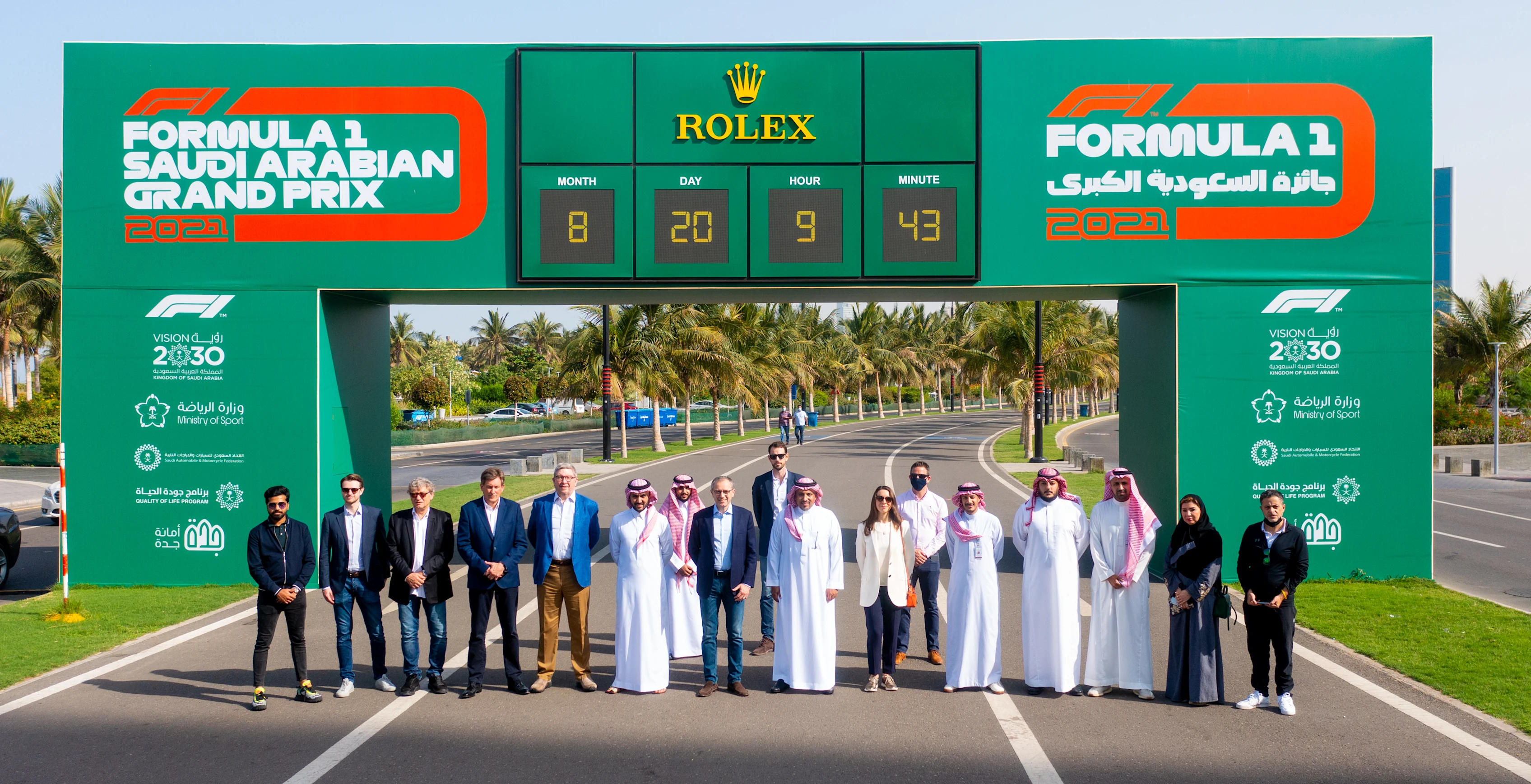
An eye on the future
It’s full steam ahead to get the street circuit in Jeddah ready for the Kingdom’s inaugural race on 3-5 December but in parallel, Saudi Arabia is pushing on with plans to create a new purpose-built track just outside Riyadh.
“The idea of hosting F1 was on permanent track we are building in Qiddiya, that was the initial plan,” said Prince Khalid. “We love motorsport, and we didn’t want to wait until that project is finished. So the idea is to start with a street race and then when the track is ready, we’ll move to that location.”
Next Up
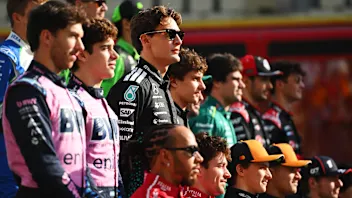
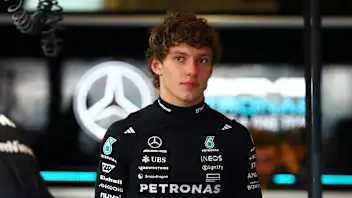
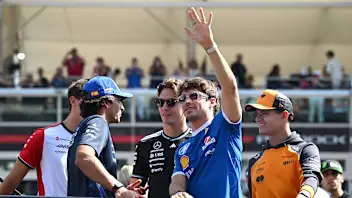
.webp)
